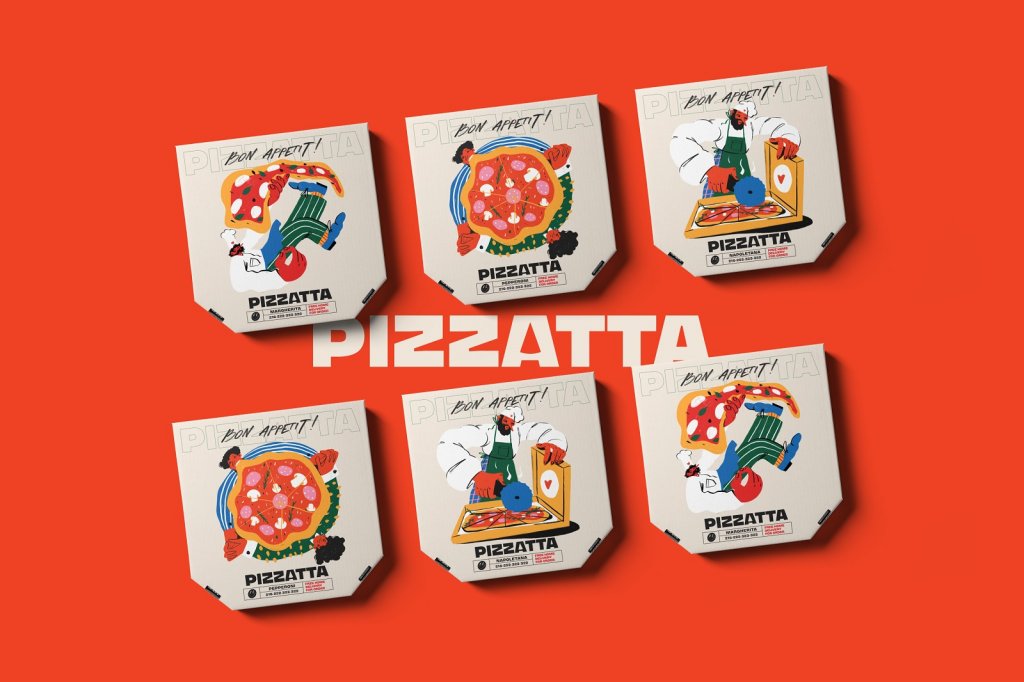The software technology is constantly evolving, and internet users as well as people creating digital products expect innovations and progress in this field. To provide high-quality development services for clients and final users being competitive on the market, it’s highly advisable for designers and programmers to keep an eye on mainstreams in the professional sphere and try the latest and greatest advances. Although it doesn’t always mean that new tools and trends will immediately replace the current, still the strategy of setting up the sails for every wind usually provides higher level of professional flexibility and growth.
The year 2016, which is quickly leaving day by day, has brought a lot of news as well as established some already known tools, trends and techniques even more solidly via practice and updates. Web and app developers have got new frameworks, updating technology and powerful development tools. We have discussed what Tubik Studio developers find popular and important to mention in the domain in 2016 and today want to share the ideas with our readers. So, here is the list of broadly used programming languages, frameworks and tools as well as updates which quickly won their place in the process. As usual, this year development trends and popular choices are driven by greater efficiency, increased customization and ease of use. Let’s check what has been found essential in iOS and web development.
iOS development
The constantly changing world of mobile phones, tablets and other devices means that businesses keep app developers busy all the time requiring high professional level and flexibility. Every latest version and update of iOS operating system brings new facilities, opportunities and challenges for developers. The following stuff was widely used in creating great variety of iOS apps this year.

Alamofire
Alamofire is a Swift-based HTTP library for iOS and Mac OS X. It uses NSURLSession and the Foundation URL loading system to provide first-class networking capabilities in a convenient Swift interface that simplifies a number of common tasks for the developers. Alamofire offers chainable response and request methods, JSON parameter and response serialization, authentication, network reachability, Unit and Integration test coverage and many other features. It was initially written in Swift and did not inherit anything from Objective-C.
ReSwift
ReSwift is Redux implementation of the unidirectional data flow architecture in Swift. The ReSwift library allows everybody to dive into the code, understand every line and contribute. It also supports Swift 2.2 through to Swift 3. ReSwift is quickly growing beyond the core library, providing experimental extensions for routing and time traveling through past app states. It provides separating app components into three important concerns: State, Views and State Changes.
Firebase
Firebase is a BaaS (Backend-as-a-Service) that started as YC11 startup and grew up into a next generation app development platform on Google Cloud Platform. It supports the web, iOS, OS X, and Android platforms. Traditionally configuration of a server requires fetching data via some API that is written in order to retrieve data from the server. Firebase simplifies storing and retrieving the data via a third party service and comes with its own API. The platform was acquired by Google in October 2014 and received a significant number of new features in May 2016. In the new version, Firebase takes many of Google’s existing developer tools, like Google Cloud Messaging and combines them with new and current Firebase services, among which app indexing, crash reporting, hosting, cloud messaging, AdWords, AdMob, storage, real-time database and others.
Swift
Before Swift came into play, Objective-C had been the main programming language used by developers for OS X and iOS operating systems and their APIs. Swift, introduced at Apple’s 2014 WWDC, brought its own dose of revolution. In general description, Swift is a general-purpose, multi-paradigm, compiled programming language broadening the previous scope of operating systems as it was developed for iOS, OS X, watchOS, tvOS, and Linux. The latest version Swift 3 got improvements which made code-writing more natural and consistent. By downloading Xcode 8 developers can easily use this new version and move automatically from previous to latest Swift 3 syntax.

Front-end development
Front-end developers also mention dynamic progress in the domain of tools and software, mostly based on the updates of already established platforms and programming languages. JavaScript holds its leading positions because the language is usually used to make web pages more interactive, create games, animations, dropdown menus and take extensive control over the web interface. A large number of web development frameworks have come into JavaScript recently and many of them have already established huge communities such as Angular, Meteor, React and Backbone. Let’s look through the most popular JS frameworks and libraries essential to remember as effective and broadly used in 2016.
Angular.js
Angular.js is a complete, JavaScript-based, open-source, front-end web app framework maintained by Google. It is a common technology to provide a solid base foundation for developers working with the latest industry standards and requirements. The framework provides a set of modern features for rapid app development. New version of Angular.js is called “AngularJS 2” and has been provided with the improved structure and development features. Now it enables to get improved and simple form of validation, two-way data binding, routing and animations. The second version is totally different from previous one, requiring ES6 and TypeScript knowledge.
Backbone.js
Backbone.js is a framework with a RESTful JSON interface and based on the model–view–presenter (MVP) architectural pattern. The main concept of the framework is that all server-side functions should flow through an API, minimizing the amount of code that needs to be composed for achieving the same powerful functionality of more sophisticated web frameworks. Backbone is a popular web development framework for JavaScript developers because its usability modules are easy to understand, and also it presents a straightforward learning curve. For example, Trello is built using Backbone.js for all the models, views, and routes. Backbone.js 1.3.3 was released in April 5, 2016. The bugs of 1.3.0 – 1.3.2 versions were fixed in the 1.3.3 and it also provided new methods and improvements.
MeteorJS
MeteorJS is a free and open-source JavaScript web framework written using Node.js. It simplifies the development of real-time mobile and web app that can be built with a singular development interface. Any web app built with Meteor is also automatically compatible with mobile devices. The developers can convert the existing web apps into mobile apps and release them in the most popular mobile app stores. Meteor is also full-stack framework supporting native JavaScript language for building modern and scalable web and mobile apps. The public package repository Atmosphere has thousands of published packages that let to create multiplex apps. The latest versions of MeteorJS are 1.4.2.3 – 1.4.3-beta.1. The main feature is enhanced rebuild performance focusing on the complex apps development. The framework has become more modular with parts that can be packaged, maintained and evolved independently.
React.js
React.js is an open-source JavaScript library for data rendered as HTML. It is maintained by Facebook and the main area of expertise is supporting implementation of a Virtual DOM. The Virtual DOM is compared with the current state of the DOM generating a list of operations that make the current DOM look like the new one. Those operations are applied quickly in a batch. React.js v15.4.0. was released in November 16, 2016. In the new version, React DOM implementation was moved to the React DOM package.The upgrade solves a few problems such as errors of React DOM import in the same file as the snapshot testing renderer. The version can visualize React components in the Chrome Timeline allowing to see which components are mounted, updated and unmounted.
CSS frameworks
CSS processors emerged in web development many years ago having quite limited set of features in their early version. Yet, nowadays they are the key points for CSS development. The processors extend CSS with variables, operators, interpolations, functions, mixins and many other usable assets. At the moment, Less and SASS are mentioned among the most popular preprocessors with the large feature sets. However, the news that Bootstrap 4 is migrating over to SASS gives it a slight edge over Less in 2016.

Bootstrap
Bootstrap has become even more popular over the last years. Like any effective front-end framework, Bootstrap includes CSS, HTML and JavaScript components. It adheres to responsive web design standards allowing to develop flexible websites of all complexities and sizes. The framework typically includes the latest and best features because it is continually updated. For example, Bootstrap added themes that met Google material design guidelines shortly after they were published and it was also upgraded to use SASS as a CSS preprocessor.
Foundation
Foundation is a highly advanced front-end framework useful for designing responsive and flexible websites. The framework supports GPU acceleration for smooth animations and has Fastclick.js for fast rendering on mobile devices. It runs on the SASS preprocessor and includes the Foundation-developed data interchange attribute, which allows loading lightweight HTML sections for mobile and bigger HTML sections for larger screens. Foundation is used by Facebook, eBay and Mozilla, but it is quite complex and may not be suitable for beginners. The version 6.3.0-rc3 was released in December 9, 2016. It has a number of the improvements such as the updates of components and fixed errors of previous version.
Back-end development
Nowadays lots of programming languages and their frameworks, such as PHP, Java, Ruby and the like, are used for efficient back-end development. Let’s check out the list of popular languages and frameworks often chosen for web projects.

PHP
PHP is an HTML-embedded programming language. The main aim of the language is to allow creating dynamically generated pages quickly. Its frameworks are used for back-end development and widely used for the complex web services. One of the main PHP development concepts is to reuse generic components and modules for faster creation and better performance of the projects. The frameworks allow keeping the codes organized, facilitating scalability and ensuring long-term maintenance.
Laravel
Laravel is an open-source web framework intended for the development of web apps following the model–view–controller (MVC) architectural pattern. The framework has a lot of fresh features and lightweight templating engine that helps developers complete the most frequent tasks like authentication, sessions, queuing and caching. Laravel has a micro-framework Lumen focusing on lean management. It helps to develop sub-projects and micro-projects and allows programmers to put them into the main framework by just copying the code into the particular project. Laravel 5.3 was released in August 23, 2016. The new features are focused on speeding up developer’s performance by adding the set of extra improvements for common tasks, for instance Laravel Scout (a driver based full-text search engine for Eloquent), Laravel Passport (the technology deploying OAuth2 server), Laravel Mailable, Laravel Notifications, Laravel Echo (an improvement to the existing event broadcasting system), a new $loop variable of Laravel Blade and a huge overhaul of documentation.
Yii
Yii is an open source, object-oriented, component-based, MVC framework, easy to use for developing web apps and APIs. It has a reliable code generator allowing to save time writing code to connect to the database and also it uses the ActiveRecord pattern for object-relational mapping which means less SQL code to write. The main benefit of the framework is the ability to decrease the complexity of developer’s work. Products created with the Yii framework are characterized as efficient, extensible and easy to maintain. The latest version of Yii was released on October 20, 2016 presenting a complete rewrite of Yii on top of PHP 5.4.0.
Symfony
Symfony is an open-source web framework built on top of components such as Drupal, Ez Publish, and phpBB. These components are reusable PHP libraries used to complete tasks like creation, routing, object configuration, authentication, templating, etc. Symfony APIs also enable easy integration with third-party apps and Symfony can be used with popular front-end frameworks such as AngularJS. The latest version of Symfony was released on December 13, 2016 with enhanced performance and fixed bugs for providing the reliable workflow.
Node.js
Node.js is an open-source, cross-platform, JavaScript runtime environment that allows developers to run JavaScript code on the server, outside a browser. It is built on top of Google Chrome’s V8 VM engine supporting JavaScript in the chrome browser. Node.js wins high popularity because it enables to build large scale, real-time and scalable mobile and web apps with only JavaScript. As the Node.js ecosystem grew, the frameworks also started to showing progress and speeding up the development workflow. There are many Node.js frameworks that simplify building real-time web apps, among them the following:
Node.js Express – a minimalist and flexible framework built on top of node.js and has taken node.js to the next level by providing high-level wrappers around node.js APIs. The framework offers all the features required for developing high-quality web apps, mobile apps and APIs. Express also qualifies as Node.js rest API framework.
KOA – a lightweight framework for developing web apps and APIs. KOA requests flow through middleware in a stack-like manner allowing developers to perform actions downstream then filter and manipulate the response upstream. KOA generators also greatly increase readability and robustness of the app.
Sails.js. – a web framework that sets platform for easy building custom, enterprise-grade Node.js apps. The framework is designed to resemble the MVC architecture from frameworks like Ruby on Rails but it has more modern, data-oriented style of web app development. Sails.js has all the features required for building anything from a small scale chat client to an enterprise-grade web app.
Ruby
Ruby is dynamic, object-oriented, open source programming language with a focus on simplicity and productivity. Moreover, Ruby has framework which supports high level of flexibility for developer in the process of creating code for particular aims. Ruby on Rails is a development tool to give web developers libraries providing structure for all the code they write. Actually, it is a server-side web app framework that extends Ruby programming language. This framework uses Ruby to dynamically assemble HTML, CSS, and JavaScript files. Rails helps developers to build websites and web apps abstracting and simplifying common repetitive tasks. Rails 5.0 was released on June 30, 2016, introducing Action Cable, API mode, and Turbolinks 5.

Java EE
Java EE is a platform for creating large-scale apps and software in the Java programming language. It includes a runtime development environment as well as an API and has additional features in comparison with the standard edition, including web services, distributed architectures, multi-tier architectures and object-relational mapping.
.NET Framework
.NET Framework is a technology that supports building and running the next generation apps and web services. The framework consists of the common language runtime and the .NET Framework class library. The common language runtime is the foundation of the .NET Framework. The technology provides language interoperability across several programming languages (each language can use code written in other languages).
Even this review, briefly describing popular tools and software, shows that the sphere is constantly growing and offering new opportunities for both developers and users. Whatever broad and diverse the list of tools will be, in practice developers choose what is better for them only by taking their own steps and breathing life in digital products via code. The best tool, software and technique is the one that enables to provide the final product which is effective, user-friendly and solid in performance. That’s the biggest intention we had compiling this list: providing developers with food for thought on trying something new and reviewing which important things the year has brought. No doubt, the next year will be even more powerful in innovation for app and web development sphere so let’s look forward to them together!
Welcome to read more articles on web development






